One of the rallying cries of the renewable energy transition is “Electrify Everything,” and for good reason. While electricity is currently the smallest energy sub-sector providing 20% of the global total, it is the fastest-growing source of final energy and is projected to dominate the renewable energy landscape by 2050 (IEA). Electric cars, electric appliances, and electric heat pumps are a few of the many ways traditionally fossil fuel-based technologies can decarbonize (and electrify).
In 2019, renewable electricity accounted for 25% of the energy mix producing 20,000 PJ/year. By 2055, that number will need to increase 10-fold to replace fossil fuels and meet the demand of our increasingly electrified world. While a seemingly large increase, electricity is a much more efficient technology than combustion and will use less total energy than an alternative future run on fossil fuels.
The One Earth model optimizes for a fast transition away from carbon-intensive coal, with OECD countries ceasing electricity generation from coal by 2030, and all countries by 2045. Natural gas is set to play a decreasingly small role until 2055. Meanwhile, solar and wind generation will climb steeply providing 78% of capacity by 2055. The renewable energy transition is projected to rely primarily on solar and wind with support from a mix of renewable energy solutions:
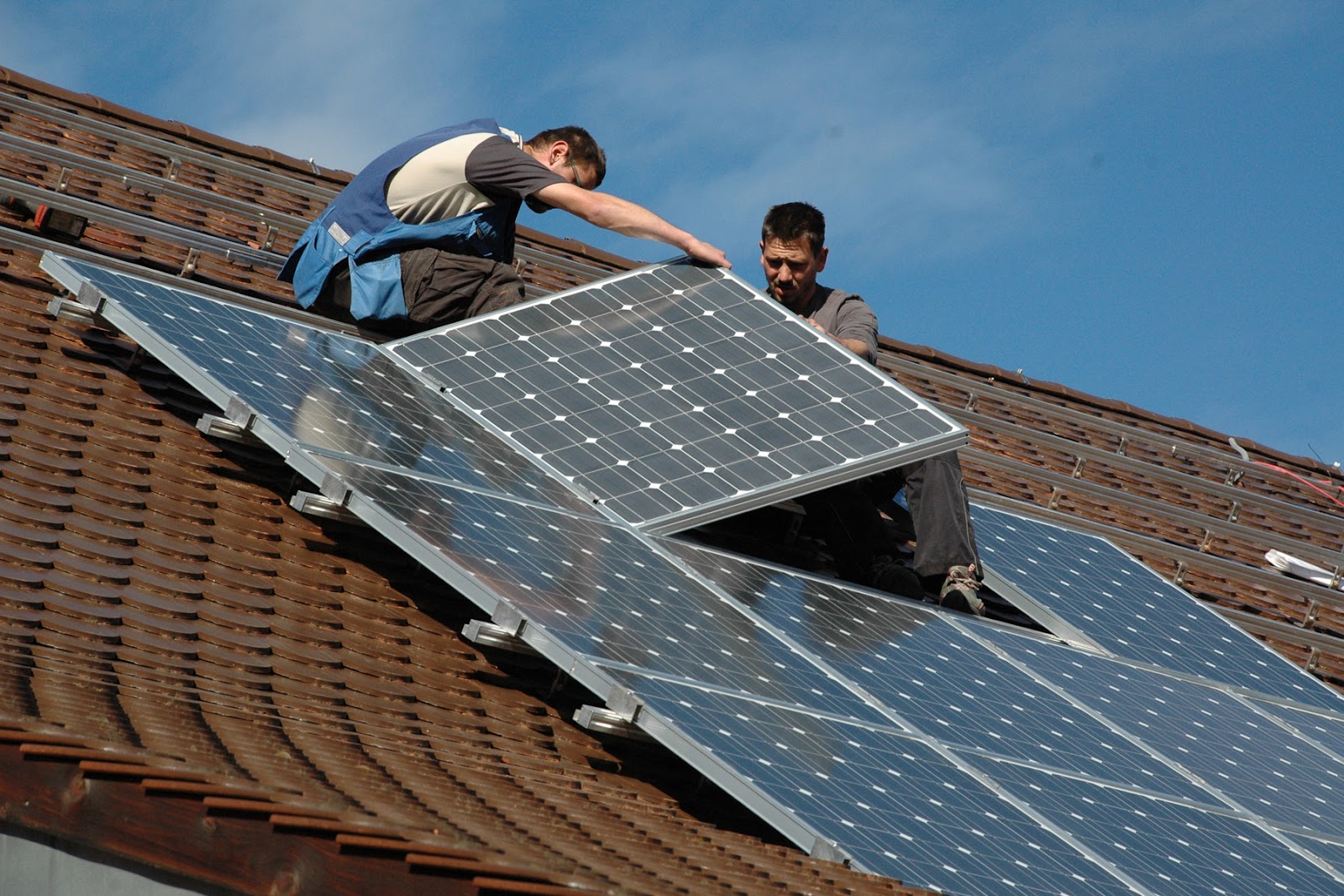
Solar panels. Photo: Dreamstime
Solar Photovoltaic
Solar panels are made of semiconducting materials capable of capturing photons from the sun and turning them into an electric current. The modularity and light-weight nature of these panels allows them to be installed virtually anywhere the sun shines, making them great for both rooftops as well as large utility-scale plants. The cost of solar panels has decreased by 89% in the past 10 years (Source: Kingsmill Bond, BNEF), surpassing fossil fuels in affordability and making it one of the cheapest energy sources available.
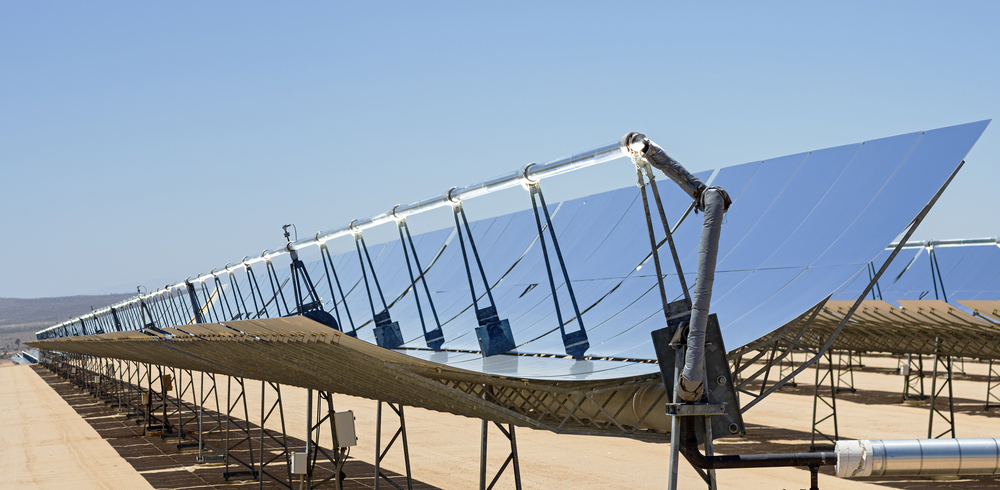
Concentrated solar. Photo: Dreamstime
Concentrated Solar
Where photovoltaics directly convert sunlight into electricity, concentrated solar uses mirrors or lenses to focus sunlight from a large area onto a smaller area. This process creates intense heat that can be further converted into electricity using a heat engine. The costs of CS have not decreased at the same rate of photovoltaics, but have potential to be paired with thermal energy storage to provide electricity after the sun goes down. In such cases, solar heat is used to heat a molten salt or similar heat-storing material in an insulated tank. The superheated salt stays hot for hours and can generate electricity nearly around the clock.
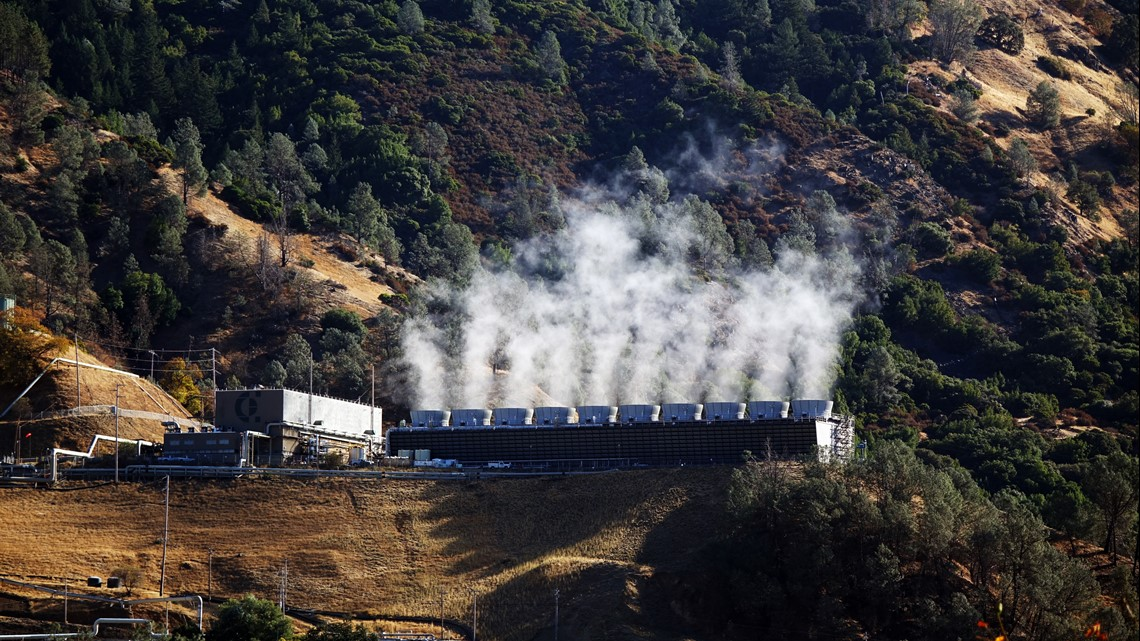
Geothermal. Photo: Dreamstime
Geothermal
Traditional geothermal occurs in very specific places on Earth where a trifecta of heat, water, and porous rock coincide. Most geothermal plants are along tectonic plate boundaries where volcanoes, geysers, and hot springs occur. In such areas, magma comes near enough to the earth’s surface to heat rock humans can access. But usually geothermal needs two other ingredients, porous rock and water so that the heated water can escape as steam capable of being converted into electricity. There are only so many places on Earth that satisfy these specific requirements, so most suitable sites have already been tapped.
However, a new wave of advanced geothermal seeks to use the skills of the oil and gas industry to replicate the necessary conditions of geothermal. Using fracking techniques, rock can be made porous and water added in places where heat already exists but not the right rock type or water source. Geothermal is critical in its ability to act as a baseload energy source — meaning, it can produce power 24 hours a day unlike solar and wind.
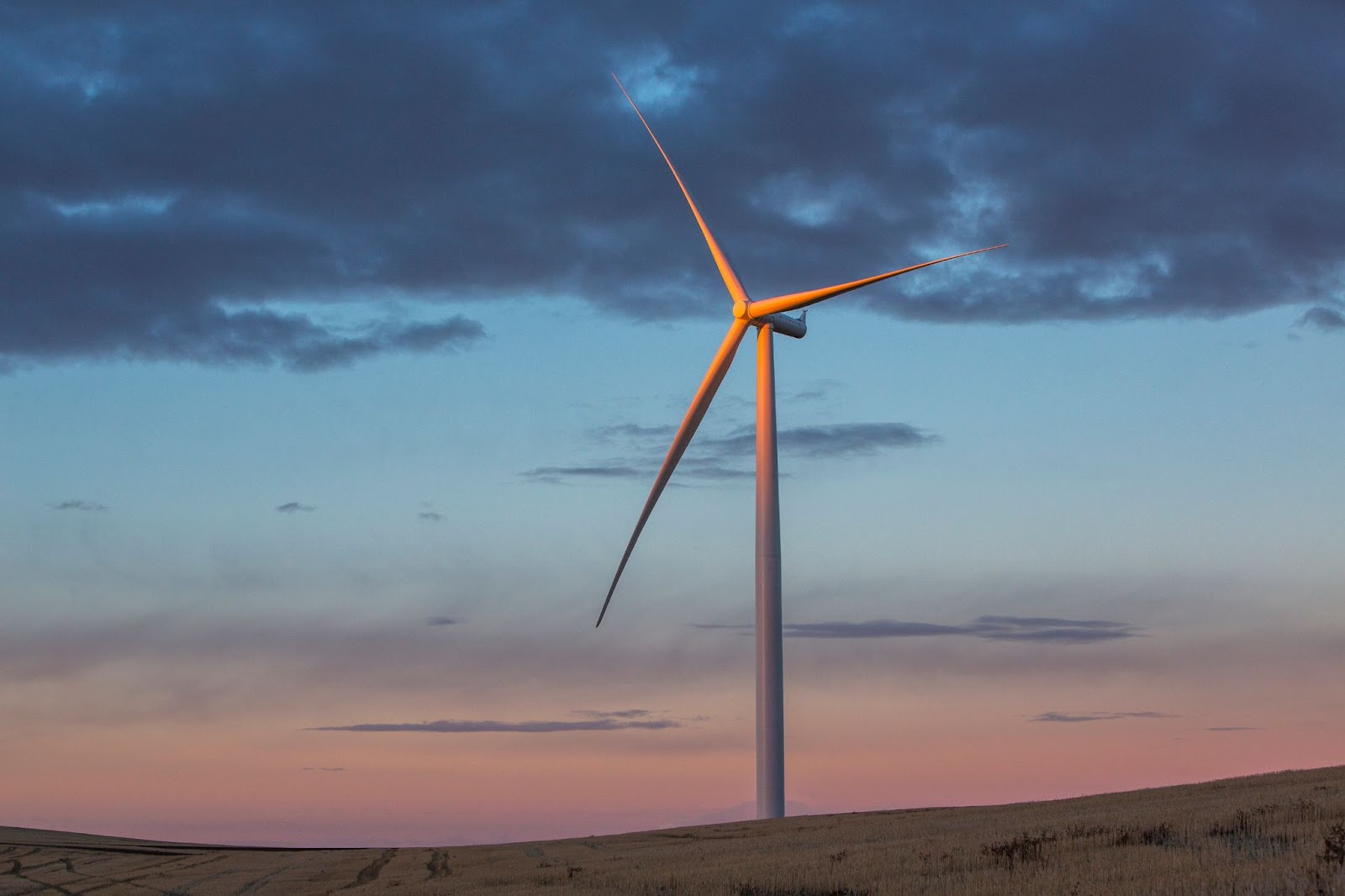
Onshore wind energy. photo: Dreamstime
Onshore Wind
Most fossil fuel power plants (including nuclear) are glorified water boilers. Their energy is used to boil water to make high pressure steam that’s used to rotate a turbine that drives an electric generator. Wind power skips the water boiling step and jumps straight to rotating the turbine by using the power of the wind. Modern wind turbines are relatively cheap to build and come in many shapes and sizes, but standard utility-scale turbines exceed 100 kilowatts in size. In the past decade the cost of onshore wind has decreased by 59%, making it cheaper than most fossil fuels.
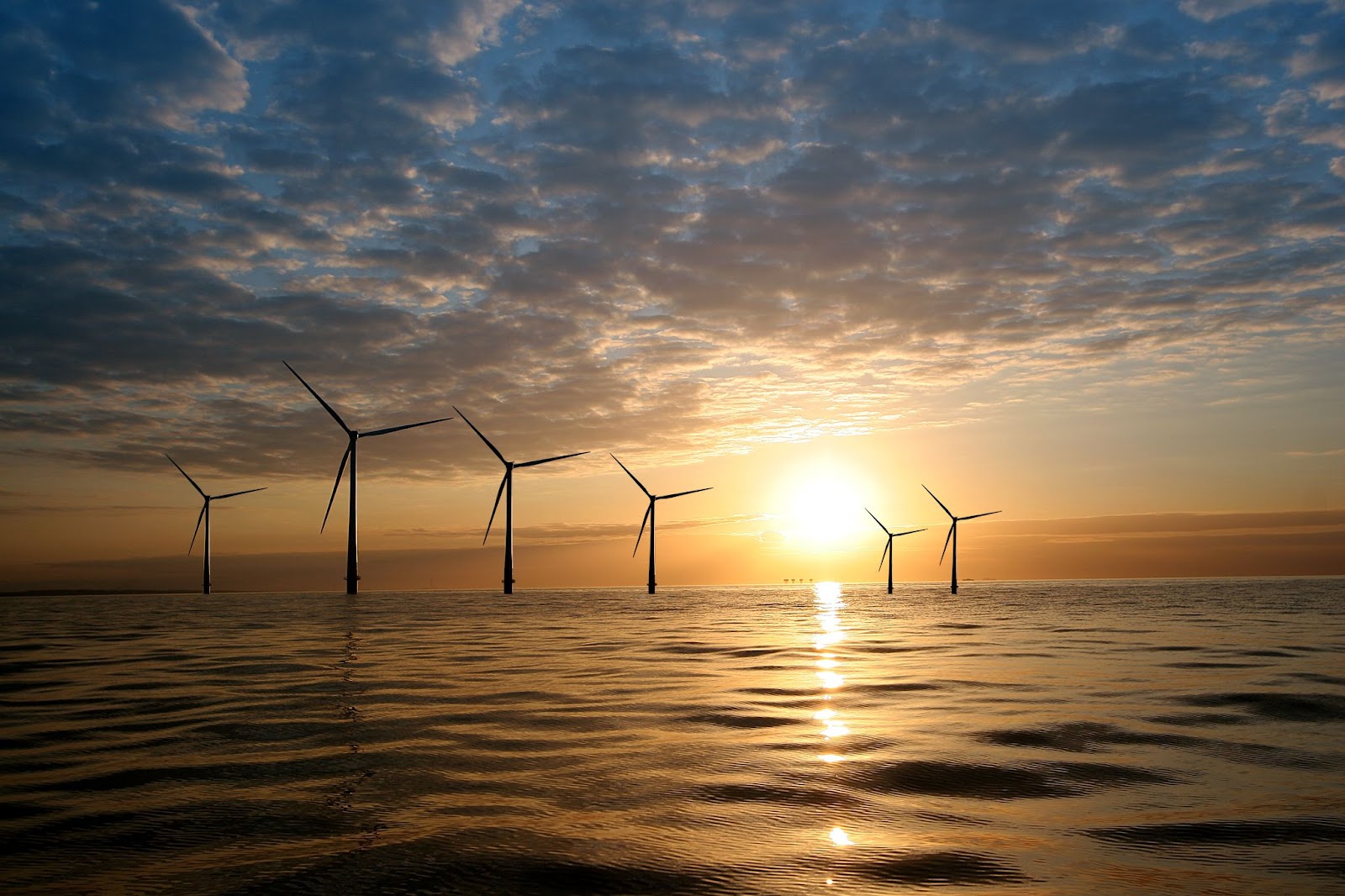
Offshore wind energy. photo: Dreamstime
Offshore Wind
The wind over certain parts of the ocean is stronger and more consistent than many places on land, making it an attractive place for turbines. Because of these advantages, offshore wind turbines are usually bigger and more efficient than their onshore relatives. While a more difficult engineering task than onshore wind, their costs have declined by 61% over the past 10 years making electricity from offshore competitive with fossil fuels. In 2021, China built more offshore wind capacity than all other countries had built in the previous five years combined. (Carbon Brief)

Wave power. Photo: Dreamstime
Wave Energy
The force of waves can be captured much like the power of the wind. Specially designed turbines can harness the back and forth motion of the waves to pump a turbine (instead of spin it), generating renewable energy in the process. While projected to be a small amount of final energy, less than 2% in 2055, it is a renewable energy that may play a crucial role in certain ocean states.
.jpg)
Sustainable hydropower. Photo: Dreamstime
Sustainable Hydropower
While renewable, hydropower is not without its controversies, as it can drastically affect watersheds. Many legacy hydropower dams are being decommissioned like the Lower Klamath Project in hopes of restoring a waterway important to the Yurok and Karuk Tribes of Northern America. A new generation of sustainable hydropower will be smaller in scale, generating electricity through controlled flow of water but will use less concrete, allow fish to migrate and produce significantly less methane emissions.
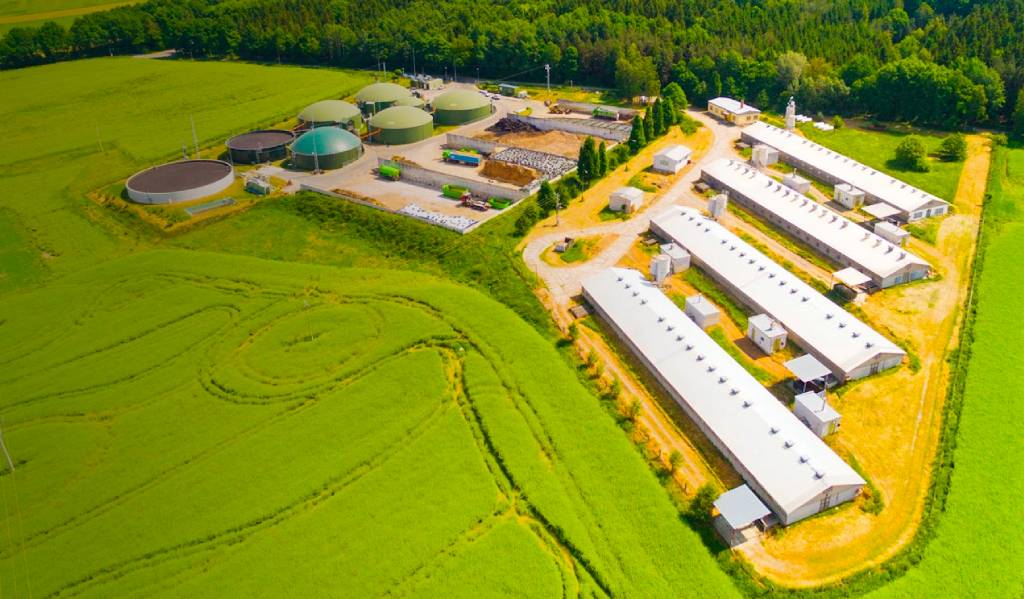
Czech biomass plant/farm. Photo: Dreamstime
Sustainable Biomass
Biomass will be in high-demand in the sustainable energy future, which is why it will only provide a small fraction of final energy demand (less than 1.5% in 2055). Ultimately, the total demand for biomass across all uses cannot exceed the IEA limit of 100EJ, and cannot contribute to reducing the extent of forest or cropland. Biomass electricity will largely come from renewable waste products such as wood scraps and crop residue. The heat from combustion can be used to run a heat engine and produce electricity.
.jpg)
Hydrogen power. Photo: Dreamstime
Green Hydrogen
Green hydrogen is one of the solutions to renewable power’s intermittency issues—a problem stemming from solar and wind producing energy at unpredictable or intermittent times of the day. However, at times of energy excess, when solar and wind energy are abundant, utilities can use that renewable energy to electrolyze water to create hydrogen fuel. In hours of more scarce renewable energy, stored hydrogen can be converted back into electricity using a fuel cell. “Green” indicates that this hydrogen was created using explicitly renewable electricity. In essence, green hydrogen is a way to store renewable energy for future use.
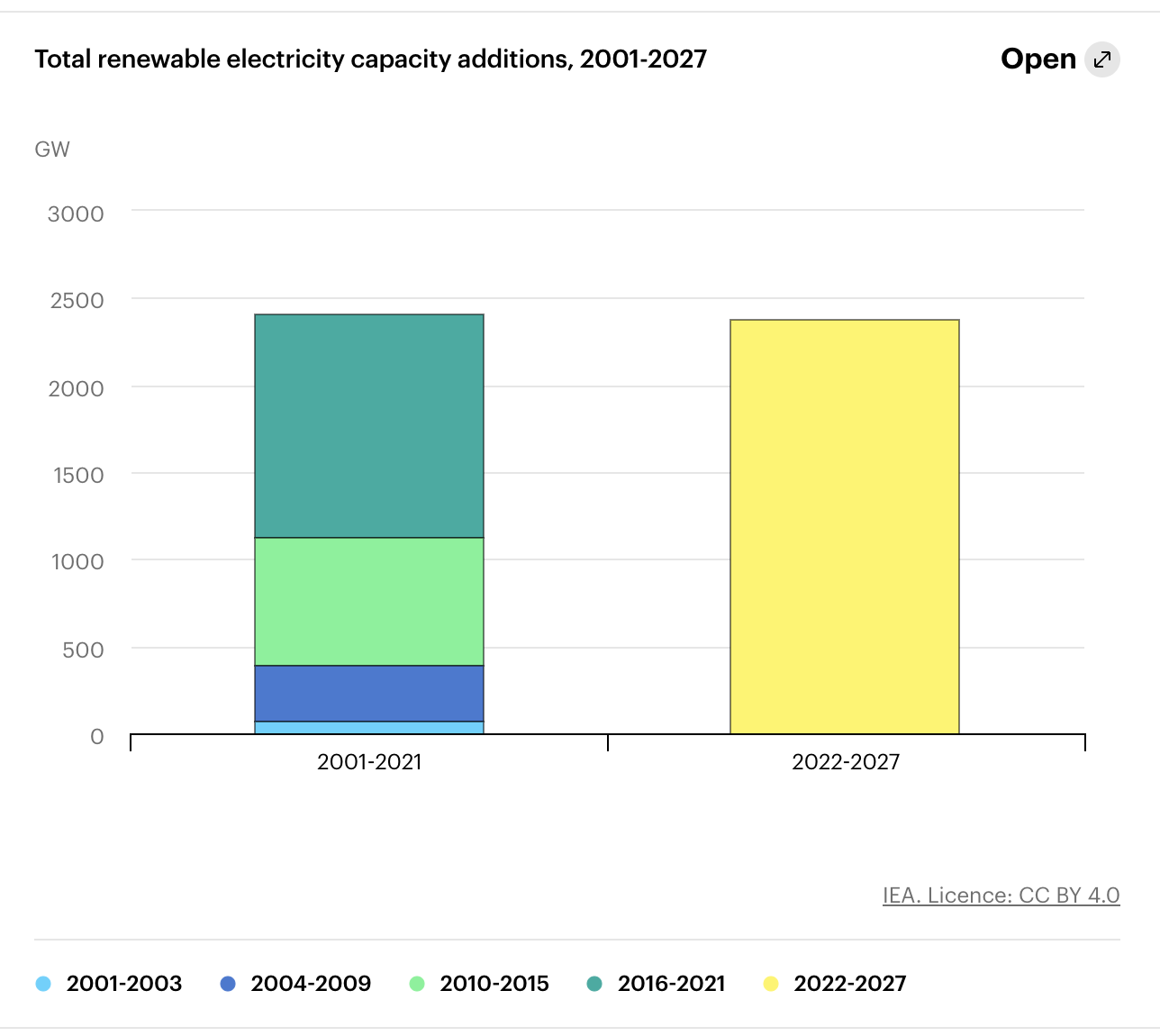
Renewable electricity is well on its way to becoming the dominant source of power. The latest IEA Renewables Report projects renewables will overtake coal as the largest electricity provider by as soon as 2025. In the next five years, the world is set to add the same amount of renewable capacity as was added in the previous 20 years. In 2021, renewables made up 81 percent of new electricity capacity, and is set to account for over 90% through 2027.
Most of this expansion is due to the continued decrease in the cost of deploying solar and wind, but renewable power’s growth is also being buoyed by countries seeking to increase energy security in the wake of Russia’s invasion of Ukraine. Quickly expanding renewable energy sources is an attractive way to reduce reliance on foreign sources of energy and move away from fossil fuels. The electricity sector was already steadily on its way to transitioning to renewable energy, but seems to have passed a tipping point, accelerating at a breathtaking pace.
-
-
Achieving the Paris Climate Agreement Goals, Part 2: https://link.springer.com/book/10.1007/978-3-030-99177-7
-
.jpg?auto=compress%2Cformat)



